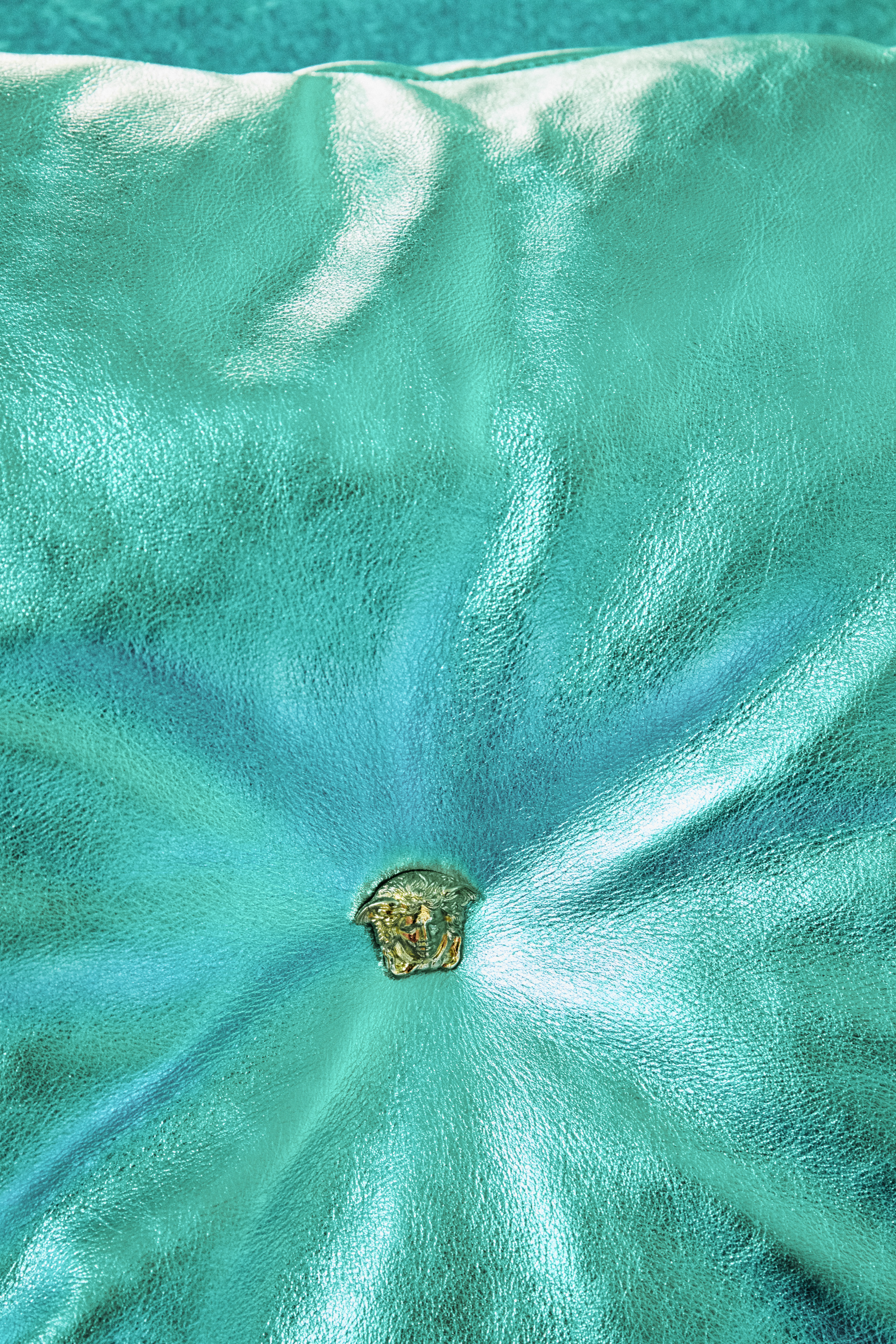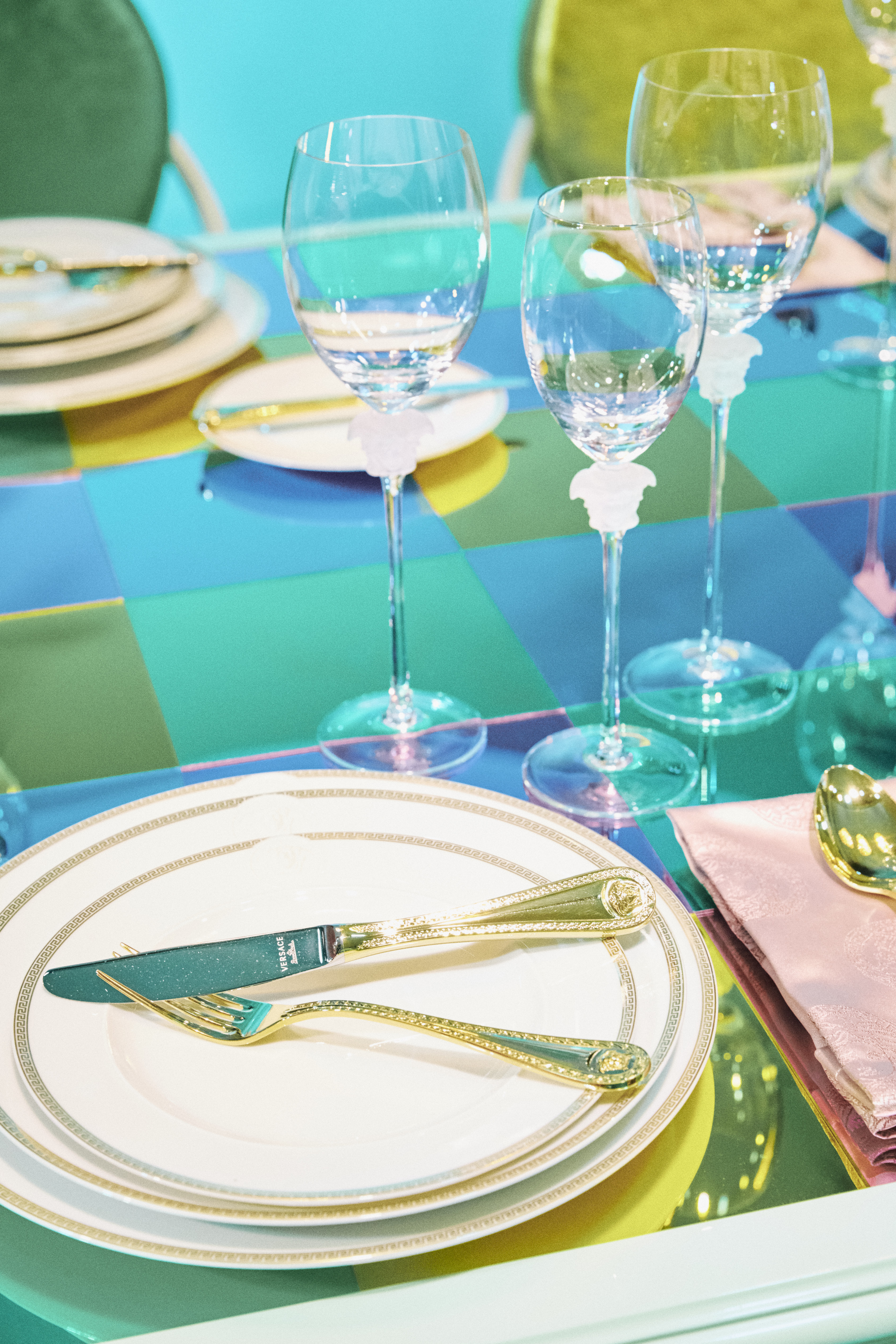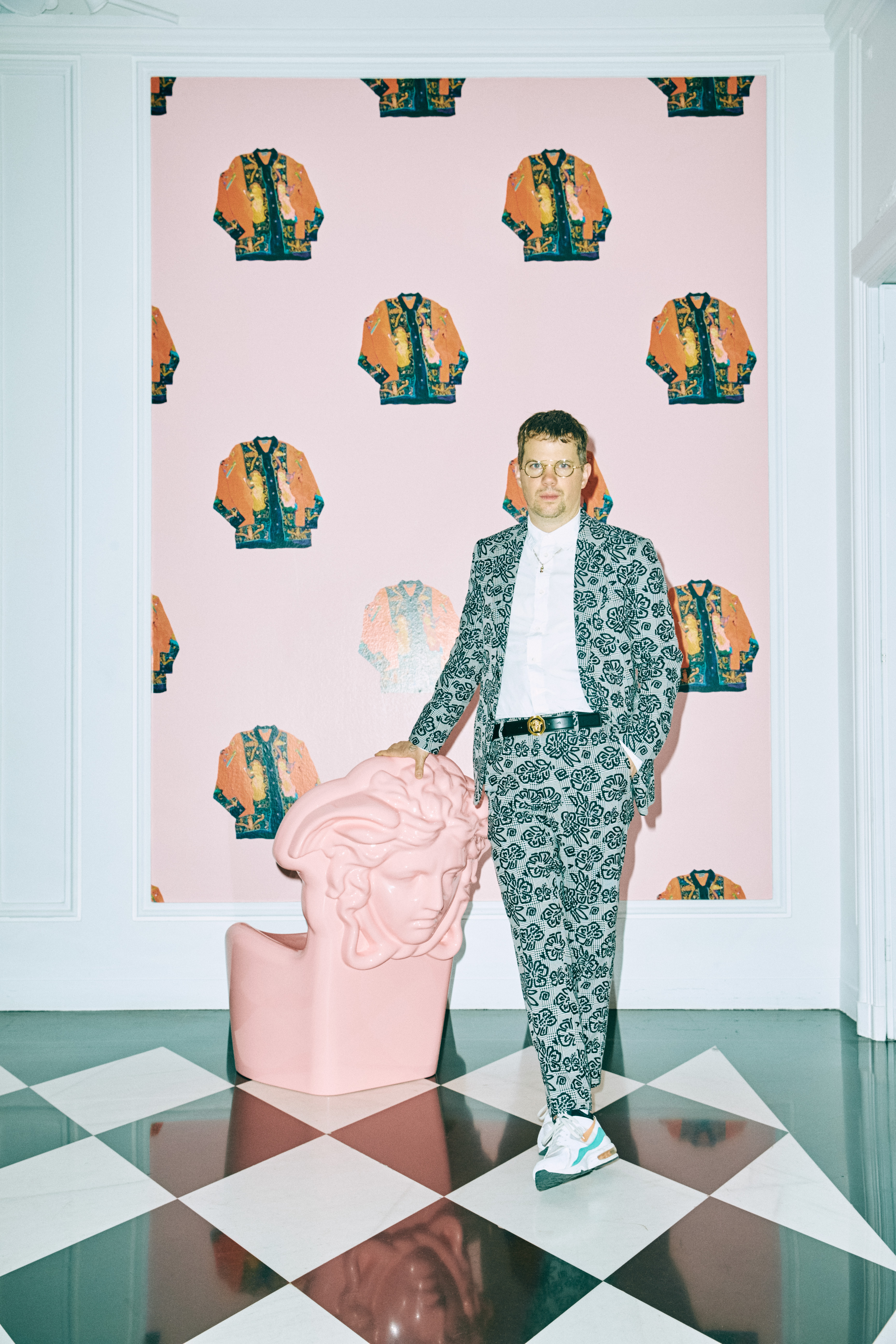Everything
![]()
Maximalism and a deft ability to showcase historical art styles over multiple decades while keeping it contemporary. This is a serviceable description of the artfulness of three forces being the house of Versace, American interior designer Sasha Bikoff and Canadian artist Andy Dixon. For Versace, classical, neoclassical and pop-contemporary references have been a hallmark since Gianni first founded his namesake brand in the late 1970s. For Bikoff, 18th century French Rococo, 1960s Space Age modernism, and the postmodernism of the Italian Memphis Group routinely appear as aesthetic touchstones. For Dixon, Renaissance art, Flemish still lifes, and Google Image searches of “most expensive vases” signify his hyper-aware understanding of art’s relationship with money; his subject matter is selected on the basis of public expectation of what an expensive painting should look like.
At this year’s Salone del Mobile, Versace, Bikoff and Dixon collided points of reference to excite even the most cynical of design aficionados in a riot of colour. For the first time in the brand’s history, the entire palazzo was transformed in order to showcase a wild-hued, utterly excessive Versace Home collection. Dixon translated the Versace brand’s aesthetic into a variety of new works, in a method not dissimilar to that of his own artistic practice, which has previously focused on Versace shirts and vintage Playboy magazines. “There are a lot of commonalities between Versace and my own work –how we both plunder culture and art history, collaging tropes into new ideas, playing within the space where high- and low-brow kiss,” he explains
to ICON.
An oasis of calm the palazzo wasn’t: kimono motifs adorn fuchsia pink wallcoverings, neon bedwear invites you to do anything but sleep and a graphic branded carpet leads from room to jaw-dropping room, including Donatella’s very own fittings dressing room. Bikoff’s interpretation of the Versace name
is deeply stood in the brand’s aesthetic, but exaggerated in saturation. “I wanted to create this fantasy, I wanted to create this vibe, but I also wanted to stay very true to [the brand],” she told ICON. “Versace lives through colour and pattern, breaking rules and promoting a sense of confidence and glamour, which is how I decorate.” And while the designer herself did not create the new Versace Home collection of products, individual and customised pieces of Versace furniture created by the interior designer can be seen interspersed throughout the installation. (Unfortunately, you
cannot buy any of them.)
“I went into the archives and picked up all these old Versace motifs – the mermaids, the hibiscus flowers, the pineapples,” Bikoff says of her creative process. Speaking specifically of the Via Gesu table as an example, she explains: “This table is usually brown wood, but I checkerboard-mirrored the top and completely lacquered it in my pastel colour palette, which came from [Richard] Avedon’s 1990 photograph of supermodels wearing metallic leather miniskirts with mohair sweaters. I want each piece to feel like an haute couture atelier piece. Like, straight off the runway – but in design.” For the designer, one favourite creation stands out. “The most special thing to me here is the carpet,” she says. “It’s a totally new pattern that I made for Versace drawn from 1980s textiles.”
![]()
When Donatella Versace first called Bikoff about the collaboration, she was understandably floored. “My connection to Versace runs so deep,” the interior designer says. “My apartment growing up in Miami was all Versace. My memories of my grandfather – he was always wearing Versace. Same with my grandmother and my mum.” Recalling the first time she wore a dress by the brand, Bikoff reminisces: “I walked into this party and I was the best dressed. I had the best time, I felt confident, I felt sexy, I felt glamorous – it was the first time in my life that I’d felt these feelings.”
Words: Marne Schwartz
THIS ARTICLE WAS ORIGINALLY PUBLISHED IN THE OCTOBER 2019 EDITION OF ICON AUSTRALIA.
RECEIVE YOUR ISSUE HERE.



